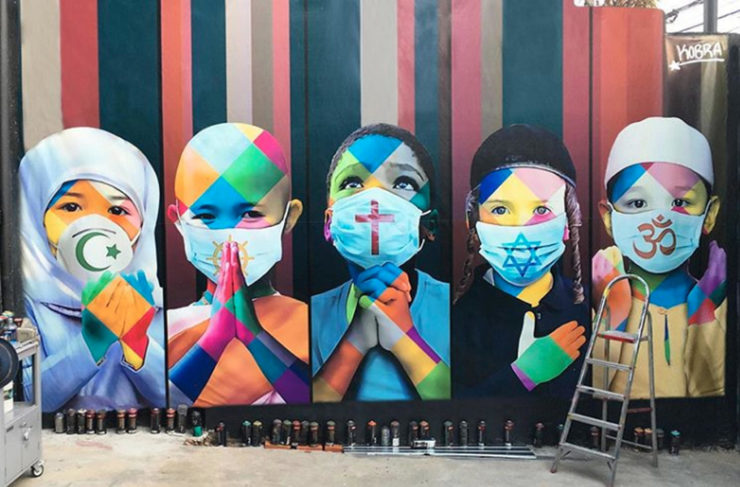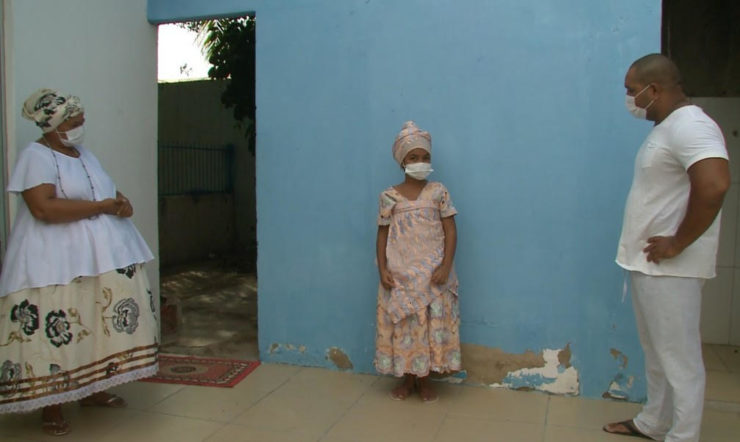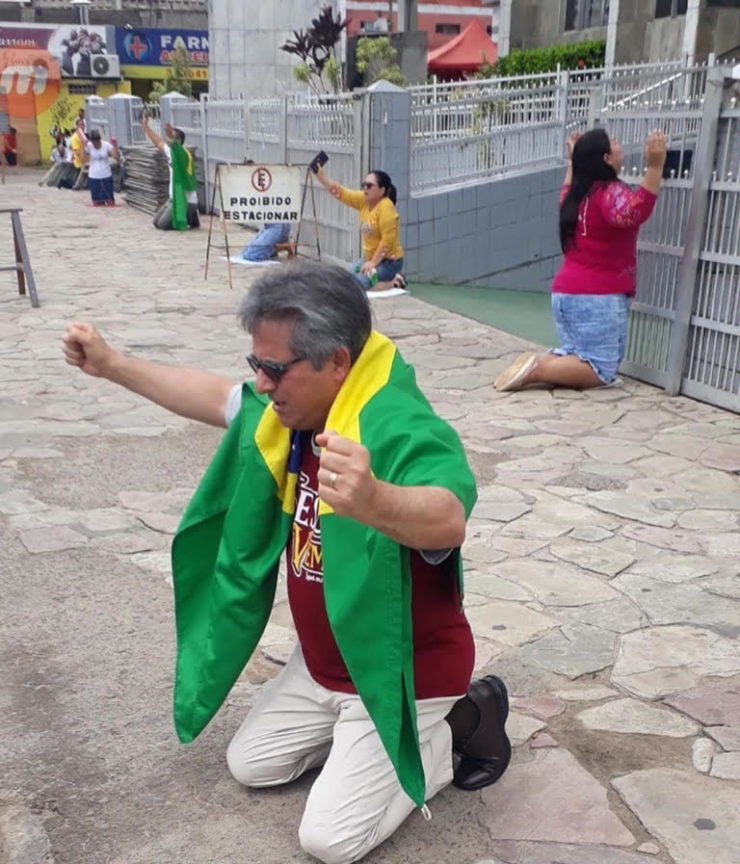Rodrigo Toniol
A pandemic is not simply created by a powerful contagious biological agent that puts millions of lives at risk. Pandemics are also the result of laws, decrees, official announcements, and collective interviews that slowly classify and name previously disconnected facts: a fish market in a city in China, South Korean evangelical pastors, the consumption of wild animals, a soccer game in Italy, a Brazilian tourist in Egypt. Seemingly random, this combination of facts starts acquiring coherence as we add some sort of “pandemic lingua franca:” to flatten the curve, Corona, lockdown, COVID, Wuhan, World Health Organization. The idea that we are facing a pandemic depends on the capability of coordination and ordering in this complex ensemble of phenomena. Highlighting that pandemics are related to the intensification of commerce and intercontinental travelling, which benefits viral dissemination throughout the world, helps us understand the epidemiological dynamic, however it can render an equally relevant dimension hollow: the history of pandemics walks alongside the history of the modern state.
Without the state, without the element that builds coherence and enacts it, there aren’t pandemics. That obviously does not mean that the devastating biological reality of the virus is being denied; nor does it suggest embarking in the dangerous adventures of conspiracy theories. What is at stake here is affirming the complexity of a pandemic, which doesn’t depend only on the circulation of a biological agent, but also on an act of “enaction,”[1] which modifies the nature of the phenomenon.
The historical registry of pandemics around the world grows as the state is consolidated as the ordering agent of life. Formerly, evidently, there used to be phenomena of generalized mortality that today would be recognized as pandemics, but in these cases, the ordering agent was different: the church. Therefore, what used to devastate the medieval world wasn’t pandemics, but plagues. The historical affinity between the state and pandemics testifies to the fall of the ability of the church in enacting plagues. The church was responsible for the moral management of explanations of deaths due to plague; it was up to the church to attribute coherence to the divine punitivism, justifying each death for dishonorable attitudes of the individual or their group.
The moralities of a pandemic are not the same as of a plague, but both share the perverse notion that the individual attitude is the key explanatory element to survival or death. It is once more the two-sided coin of the ideology of individualism in action: salvation depends on the private action, just as the responsibility for death is invariable.
What the pandemic in the XXI century keeps revealing is that if there isn’t a biological selectivity, the distribution of the risk of being affected is unequal. The fantasy of a “democratic virus,” as some analysts insist as being true, is either a symptom of a wish that nature accomplishes the principles that we see being increasingly threatened, or a result of a myopia that insists on not recognizing that specific social groups will have to disproportionately deal with the consequences of the epidemic. The distribution map of COVID-19 in Rio de Janeiro spotlights this situation in an exemplary manner: having had the first cases happen in Zona Sul and Barra (which are wealthy neighbourhoods), the dissemination and explosion of contagion does not happen in the city streets, but rather on the hills of the favelas, where there isn’t the possibility of isolation, where the sanitary conditions have always been precarious – here the medical support does not exist. It is here that, once more, a pandemic needs to be understood as coming from its commensurate, the state.
Modernity brought to the state the possibility of transforming the shape of its government and the management of lives. As the philosopher Michael Foucault argued, it is no longer about exercising a sovereign power that determines death when it deems it necessary: a power that decides when to make die and to let live. In modernity, the state exercises biopolitics, a way of sovereignty based on management of lives of peoples: the power to make live and to let die (Foucault 2008). We will be facing the rawness of biopolitics in the next months. We will encounter the evidence of a situation in which even the possible victory of medical technology over the virus, with the discovery of a vaccine, for example, will not end the battle. It will continue operating from the inequalities that are currently placed.
The fact that the state is the agent for managing a pandemic, as opposed to the role played by the churches in the face of plagues, does not mean that religion is not a fundamental element in thinking about the varied experiences of the pandemic that we are witnessing. If religion remains a crucial element in organizing the experiences of threat and insecurity in the days of COVID, researchers dedicated to the subject now face the challenge of analyzing this relationship. I suggest that we can organize this research agenda into four axes or layers of reflection, which are in dialogue with Meyer’s proposal on the presentation of this dossier.

First, analysis of the pragmatic solutions taken by religious leaders and their communities in the face of state regulations: should the temple be opened or closed? How to ensure the safety of the temple and sacred objects? Is it necessary to stop or intensify pilgrimages?
Second, reflections on religious services and new mediators who have played a vital role at this time. In the Catholic Church, the celebrations transmitted over the internet are multiplying, in the mold of that paradigmatic held by Pope Francis in the empty St. Peter’s square. Smaller churches in Brazil started to use live broadcast on Instagram and Facebook. When observing these transmissions, we can identify, noting what is privileged in the images, the different emphases that the priests give to the ritual act: in some broadcasts, we see only the priest; in others, the church is empty, and the emphasis is on the altar and its objects. Pentecostal churches are historically the ones that most quickly joined the radio and television media to spread their religious rituals. However, it is from them that strong resistance to the closing of the temples and isolation from their community seems to arise – on this dossier, see Johanneke Kroesbergen’s piece. In Brazil, we have also observed situations of difficult resolution in the case of Afro-religious temples. According to the religious precepts of these groups, it is necessary to “feed the orixá,” exchange the offerings and maintain the axé activity. How can they do this without community, without being able to enter the temple? The vodoo-priest Christopher Voncujovi shows us examples of digital adaptation in the afro-religious context, as pointed out by Angelantonio Grossi.

Thirdly, I suggest the eschatology of the pandemic as a possible research axis in the relationship between COVID-19 and religion. How do religious traditions inscribe this pandemic experience in their longue durée narratives about the world and possibly its apocalyptic ending? How has the experience of the pandemic changed imaginations about the future and reframed the cosmologic interpretations of the present? According to the candomblé calendar, for example, 2020 is a year of Xango, the orixa of justice. The power of judgment, which is marked in this very year, has turned to be the starting point for the new destiny of the world. We can also observe a similar process with astrologers creating explanations about the present and the future of the world based on the pandemic astrological chart.

Finally, a transversal axis of reflection to think about COVID-19 from the angle of religious studies concerns the links between politicians and preachers. As we can observe in different countries, some religious traditions have more power to negotiate with the public power the possibility to keep their temples open. And we can also note how politicians, even in secular societies, are choosing religious allies to give hope and fight against the virus.
In sum, there is an intricate connection between the State-pandemic and the Church-plague nexus. In the XXI century, the language that enacts the concrete of this catastrophe is the State-pandemic nexus. This doesn’t mean, however, that religion is no longer entangling the world, but the point is that this entanglement plays a different role and exists next to and in conjunction with modern states. As in any catastrophe, the moment we live in has many temporalities. What I am suggesting with this research agenda is to consider the different temporalities of the pandemic experience as an event. Analyzing such events, we can start from the most immediate situation, which refers to the opening – or not – of a temple, including questions about the management of religious services, and then move towards the impact which this experience has in changing how people imagine the end of the world or hope for a new future.
References
Foucault, Michel. The birth of biopolitics: lectures at the Collège de France, 1978-1979. Springer, 2008.
Mol, Annemarie. The body multiple: Ontology in medical practice. Duke University Press, 2002.
Bio
Rodrigo Toniol is Professor of Anthropology at Unicamp and the current president of the Association of Social Scientists of Religion of Mercosur. As a visiting researcher at the department of Philosophy and Religious Studies at Utrecht University in 2017 and 2019/20, he was affiliated with the Religious Matters programme.
Notes
[1] My reference here is the term enact, used by Annemarie Mol (2002) to show that things/objects exist as long as the practices that work for its production are articulated. Enact is the act that establishes a reality.
This blog is a part of ‘Dossier Corona’, introduced by Religious Matters in the spring of 2020.
